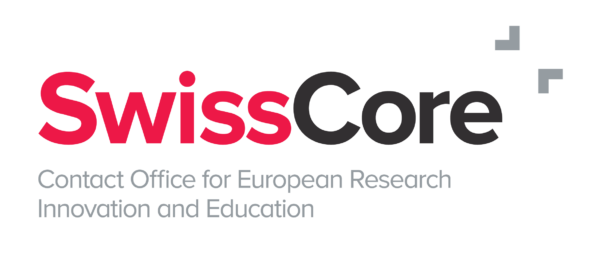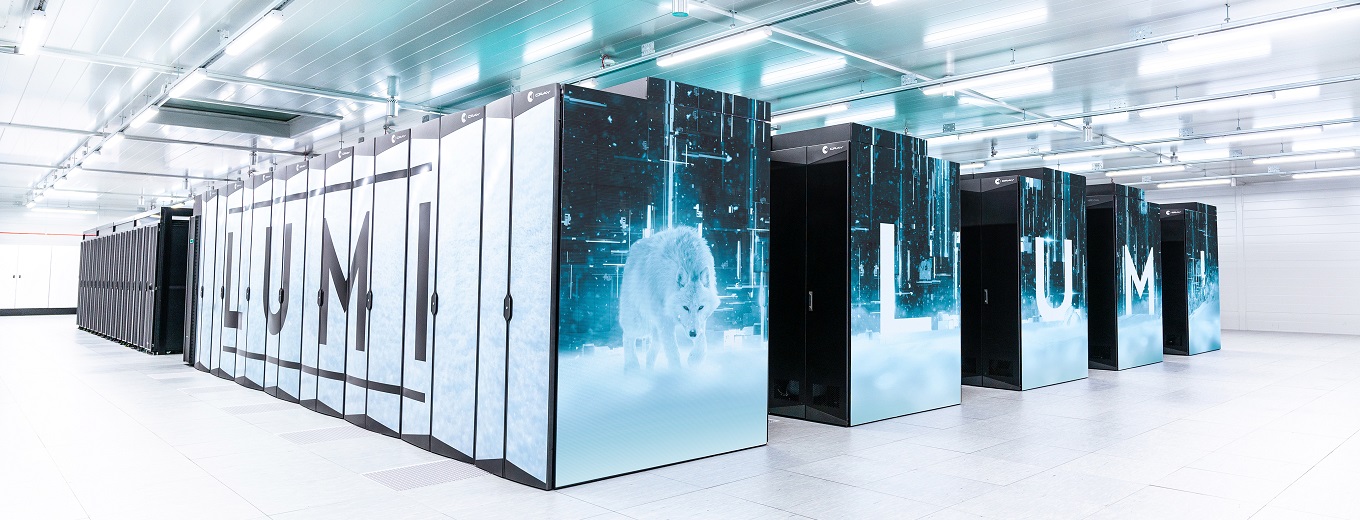By combining expertise and financial power, Europe starts to catch up in the global race of high-performance computing – and Switzerland is part of it.
Supercomputing has been affecting our lives for decades, from weather forecasts, automobile safety and efficiency or CGI technology in movies to the development of vaccines against Covid-19. It is almost omnipresent and will get even more important in the future. However, for a long time, high-performance computing (HPC) in the European Union stayed behind the developments in the USA or China. Europe ramped up its HPC capacities on 13 June 2022 with the inauguration of the Large Unified Modern Infrastructure (LUMI) at the CSC – IT Center for Science in Kajaani (Finland), which was officially accepted on 31 January 2023.
LUMI is the most advanced high-performance computing project in Europe and according to the TOP500 List 2022, it is not only the number three worldwide when it comes to the computing power, but also number three of the greenest supercomputers worldwide. It was co-funded by the Horizon Europe framework programme of the European Union via the EuroHPC Joint Undertaking (EuroHPC JU) and the ten consortium countries of the supercomputer, of which Switzerland is one. LUMI is the most powerful part of the supercomputing network, planned and coordinated by EuroHPC. The network includes six more supercomputers in Italy, Spain, Slovenia, Luxembourg, Czech Republic, Bulgaria and Portugal.
Thomas Schulthess, ETH Professor for Computational Physics and Director of the Swiss National Supercomputing Centre (CSCS) is part of the strategic committee of LUMI and, therewith, represents Switzerland in the Consortium. In a recent interview with SwissCore, he recounted the importance of Switzerland in the set-up of LUMI:
In 2017, when the European Commission announced the plan to build the EuroHPC JU, it wasn’t sure if Switzerland would be a part of the newly created European Partnership. However, because of the strong involvement as one of the five main hosting members in the Partnership for Advanced Computing in Europe (PRACE), which until recently provided access to Europe’s leading supercomputers, Switzerland was invited to join the EuroHPC JU in 2018. Schulthess’ plan was to invest about 50% of the available Swiss money planned for the JU into an HPC centre in Finland, for which Kimmo Koski, the director of CSC Finland was searching for partners back then. After Switzerland joined the Fins, other countries began to take interest in this new consortium as well. According to Schulthess, “it was like a snowball effect, with more and more countries joining. The first ones in joining were Norway, Sweden and Denmark, and then you could see how the avalanche increased with Belgium, Poland, Estonia and the Czech Republic, and finally, Iceland was joining.” He further explained that even if Switzerland has not been part of the governing board of the EuroHPC JU since 2021, due to the missing association to Horizon Europe, the CSCS remained an important consortium member of LUMI.
The location of the supercomputer in Finland is for Schulthess a “brilliant and quite obvious idea”, because of the ideal environment for such an energy-intensive facility. By using only energy produced with hydropower plants, which can fulfil an energy demand of up to 200MW, the carbon footprint of the supercomputer is already pretty low. By additionally using free cooling with air and water and afterwards using the waste heat for supplying about 20% of the Kajaani district with heating not only the energy costs of LUMI are reduced by up to 40%, but at the same time almost 12’400 tons of carbon dioxide can be saved. Therefore, the city’s carbon footprint is substantially reduced. This energy efficiency is one reason why LUMI is located in Kajaani. Besides, the extremely reliable power grid, high security and safety standards as well as multiple physical connectivity routes made CSC – IT Center for Science an attractive place to be.
In total, the budget of LUMI is worth more than €144.5 million. It is a top-of-the-range pre-exascale supercomputer, consisting of a Cray EX supercomputer system by Hewlett and Packard Enterprises, which allows the processing of big data and complex models at a new level in Europe. Even if the physical location is far away, groups from all over Europe can easily access this computing power via the cloud service Puhuri that is operated by the high-performance computing centre of the Estonian University of Tartu. Programmes executed this way on LUMI can use the computing power of 375 petaflops (550 quintillion calculations per second), what equals the combined performance of a 23 kilometres high tower of 1.5 million latest laptop computers. Additionally, LUMI offers 118 petabytes (123 million gigabytes) storage capacity and a bandwidth of 2 terabytes per second to allow advances in different fields, especially when it comes to AI or quantum computing.
Various data-driven methods in research, administration and industry can benefit from this incredible computing power. It allows to make more calculations within a shorter period, and it enables researchers to use more accurate and complex models than ever before, for example, in material physics, climate change, drug development, cancer diagnosis or artificial intelligence. The first projects were already conducted on the now fully functional LUMI during the pilot phases. As part of the second pilot phase in August 2022, selected users from the consortium countries could use LUMI and that included two Swiss projects by researchers from the Universities of Basel and Zurich. These two groups are working on molecular modelling.
Schulthess further said that “the results so far are very strong and even though there were some minor drawbacks innate to complex projects like LUMI it showed that the collaboration with our LUMI partners was a full success.” He is impressed by the incredible facility available now, and even sees some inspiration drawn from the computing centre in Lugano regarding the architecture of the facility. As the first tests with the weather and climate models, in which the Swiss CSCS worked closely with the Max Planck Institute for Meteorology, as well as the German national weather service and ECMWF, were successful, the hopes are high for upcoming projects. Schulthess said “if you can run the extremely complex weather and climate models, you can run almost everything on LUMI, including models for astrophysics, high energy physics, life-sciences, fluid dynamics, language studies or material science”.
In December 2022, the system finally became generally available for users. 50% of the computing resources will be accessible via the EuroHPC Joint Undertaking, which is publishing continuous peer-reviewed calls open to all eligible European users, including Switzerland. The remaining 50% of the computing resources are available for the consortium countries and accessible via calls of the countries’ national share. In the case of Switzerland, this is the Swiss National Supercomputing Center (CSCS) at ETH that can use 5% of the total resources.
This large variety of disciplines that can use the computing power of LUMI, represents the importance of the facility and the internationality of the project. Many of the projects run on LUMI, have or will have an impact on society worldwide, for example, the climate model calculations. Schulthess also said that “without combining knowledge and financial resources from different countries for creating infrastructures like LUMI, it wouldn’t be possible to tackle these big problems in science and respectively in society in such an effective way”, and finalised indicating that “it is about a bigger thing than just individual countries. There is no national science, there is only science, to which Switzerland has a strong contribution, but in the end, it is about humanity.”
Picture Copyright: Fade Creative / CSC

